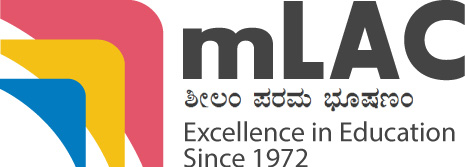The students of II B.Sc IV Sem (PCM and PMC) were taken to HAL Museum on Tuesday, 19.07.2022 along with two faculty members Mr. Akshay S and Ms. Anupama .
All the students entered the Museum and started to visit all places inside the Museum. There are two major halls, one displaying the photographs that chart the growth of aviation in each decade from 1940 till date and a Hall of Fame that takes the visitors on an exciting journey through the Heritage of Aerospace & Aviation Industry in India. The second Hall highlights the various functions of an Aero Engine by displaying motorized cross sections of various models of Aero Engines. Real Engines such as Garret (for Dornier Aircraft), Adour (for Jaguar Aircraft) and Orpheus (for Kiran Aircraft) can be seen here along with Ejection Seat with Parachute; and Pushpak & Basant Aircraft. Outdoor display of Aircraft such as MARUT, MIG-21, HT-2, KIRAN, CANBERRA, AJEET, LAKSHYA (Pilotless Target Aircraft) & many more, will excite aerospace lovers of all ages - kids, students and adults.
A Unique exhibit is the ATC Radar parched with L Band surveillance Radar having a range of 200 nautical miles which rotates at speed of 3-4 RPM, with the frequency of 1250-1350 MHZ and Meteorological Radar. In addition, PSLV model & PSLV Heat shield are displayed to give a glimpse of forays made by the country in space technology. For the academically inclined, a Library on Aerospace provides opportunity to trace the exciting development of the industry since the 1940s. While the Museums’ prized possessions include various types of Aircraft models on static display, the availability of Audio-Video facility and display of Tran slides enhances the experience immeasurably. The Museum has an excellently landscaped exterior with an exclusive Rose Garden, Orchidarium and Herbal Garden with several exotic varieties. A sustainability park displays working models of solar power systems, biogas plant and hybrid windmills to educate visitors and students on alternate energy sources which help conserve natural resources and preserve the environment. The visit was completed by 4.30pm. It was a great benefit for the students to directly understand about the various concepts of missions and Aircrafts designed by HAL.




